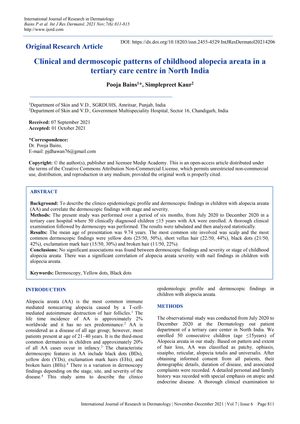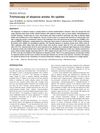Clinical and Dermoscopic Patterns of Childhood Alopecia Areata in a Tertiary Care Centre in North India
October 2021
in “
International journal of research in dermatology
”

TLDR No link between scalp patterns and alopecia severity in children, but more severe cases often had nail abnormalities.
The study conducted over six months at a tertiary care hospital in North India involved 50 children aged 15 years or younger with clinically diagnosed alopecia areata (AA). The mean age of the participants was 9.74 years. Dermoscopic examination revealed that the most common site of hair loss was the scalp, with the most frequent findings being yellow dots (50%), short vellus hair (44%), black dots (42%), exclamation mark hair (30%), and broken hair (22%). The study concluded that there was no significant relationship between the dermoscopic findings and the severity or stage of AA in children. However, there was a notable correlation between the severity of AA and nail abnormalities in the pediatric patients.



